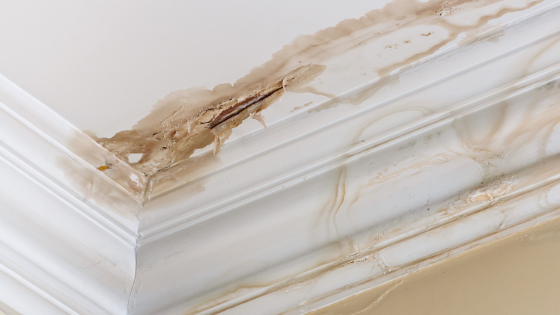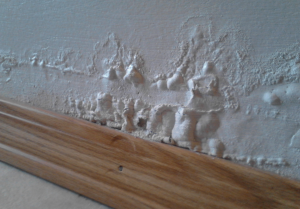We have encountered this article about Water Stains on Walls listed below on the internet and accepted it made good sense to talk about it with you on my blog.

Water spots on walls are not pleasurable to the eyes. Sometimes it appears almost unpreventable to experience water discolorations on wall surfaces in houses.
Property owners living in damp regions regularly deal with the worry of water stains on wall surfaces. With all-round and exact information on the reasons of water discolorations and timely fixing processes, you will certainly constantly be a step in advance of such events.
3 Usual Causes of Water Stains on Walls
Unlike common belief, water spots on walls do not constantly come from inadequate structure products. There are a number of causes of water spots on wall surfaces. These consist of:
Damp
When warm wet air meets dry cool air, it causes water droplets to form on the wall surfaces of structures. When there is heavy steam from cooking or showers, this occurs in cooking areas and also bathrooms. The water beads can discolor the bordering walls in these parts of your house and infect other locations.
Damp or condensation impacts the roof and also walls of buildings. This creates them to appear darker than other locations of the house. When the wall is wet, it creates an ideal environment for the development of fungi and also microbes. These might have unfavorable results on health, such as allergies and also breathing problems.
Poor Water drainage
This will certainly prevent water from permeating right into the wall surfaces. This web links to too much moisture that you notice on the wall surfaces of your structure.
So, the leading source of damp wall surfaces, in this instance, can be an inadequate drainage system. It can also be because of bad administration of sewer pipelines that go through the structure.
Pipeline Leaks
A lot of houses have a network of water pipelines within the wall surfaces. It constantly boosts the viability of such pipelines, as there is little oxygen within the wall surfaces.
A downside to this is that water leakage affects the walls of the building as well as creates prevalent damages. An indicator of malfunctioning pipelines is the appearance of a water tarnish on the wall.
Pro Suggestion
A houseplant in your house additionally boosts its humidity. So, if your house is already humid, you may wish to present houseplants with minimal transpiration. An example of suitable houseplants is succulents.
Water Stains on Wall: Fixing Tips
Home owners would generally want a quick fix when handling water spots. They would soon recognize this is detrimental as the water stains persist. Right here are a couple of useful tips that will certainly assist you in the repair service of water discolorations on wall surfaces:
Conclusion
Although no one intends to have water stains on walls in their residence, it can take place to the most effective of us. This post provides you take advantage of, as you currently know just how to manage this mishap if it does happen.
It is constantly best to recruit expert solutions to aid take care of the problems in your home.
Occasionally it seems nearly inescapable to experience water stains on wall surfaces in houses.
Contrary to preferred belief, water discolorations on wall surfaces do not always stem from bad building products. There are a number of causes of water stains on wall surfaces. The water droplets can stain the bordering wall surfaces in these components of your home as well as spread to various other locations.
Below are a few valuable pointers that will certainly direct you in the repair of water stains on walls:
CHECKING FOR WATER DAMAGE
Water damage can be costly, and it may begin before you even notice the first signs of trouble. Water damage can cause mold and mildew in your walls and floors, which can create an abundance of health concerns for your family. It can also lead to costly repairs of various appliances and general home fixtures. To avoid the pricey consequences of water damage, here are Warner Service’s top 5 places you should check:
The walls – The easiest place to spot the beginnings of water damage is on the walls and ceilings of your home. If water damage is present, there will most likely be water stains, especially around the windows and doorframes, and/or cracks in the drywall. If a stain looks unusual (discolored to brown, black or gray, raised texture), has a swollen appearance or is soft to the touch, contact a professional immediately. The pipes – To avoid water damage, consistently check the pipes in your kitchen (especially the dishwasher and ice maker), bathrooms, laundry room (specifically washing machines) and basement for corrosion, leaks and water stains. Pay special attention to where the pipes connect in your home and the location of caulking around the bathroom fixtures, including toilets, sinks, showers and tubs. Missing or loose caulking and grout could be signs of leaking water. This seepage can also quickly cause mold and rust, so double check your water heater and tank for wet spots on the floor. The floor – Water damage is very easy to spot on the floor. Look for any warping or buckling of the material, especially in the basement. If your home has wood flooring, look for bright white or dark stains. If your home has carpeting, keep it dry and clean. A damp carpet that smells of mold could cause water damage and health problems. To avoid this, consider installing floor pans under your appliances to help prevent damages from small, slow and undetected leaks. The basement and attic – If your basement or attic smells odd check for mold and mildew around the area, especially the valley where the roof meets. While you are inspecting those areas, check for wall cracks, floor stains, rust and dampness in the insulation. If you live in a colder and/or rainier climate, perform routine checks for water damage from melting snow or ice and rain. The exterior – Check the roof for damaged flashing and missing, cracked or curled shingles. There should also be no standing water anywhere outside your home. This could be caused by puddles, leaky rain gutters or hoses, poor drainage, or short gutter spouts. Invest in a sump pump system or water flow monitoring system, and perform routine maintenance on these outdoor appliances to avoid indoor water damage.

I stumbled upon that blog posting about Water Stains on Walls while doing a lookup on the search engines. Please take a moment to distribute this article if you appreciated it. I appreciate reading our article about How to Find and Repair Water Leaking in the Wall.
Quality care? Call.